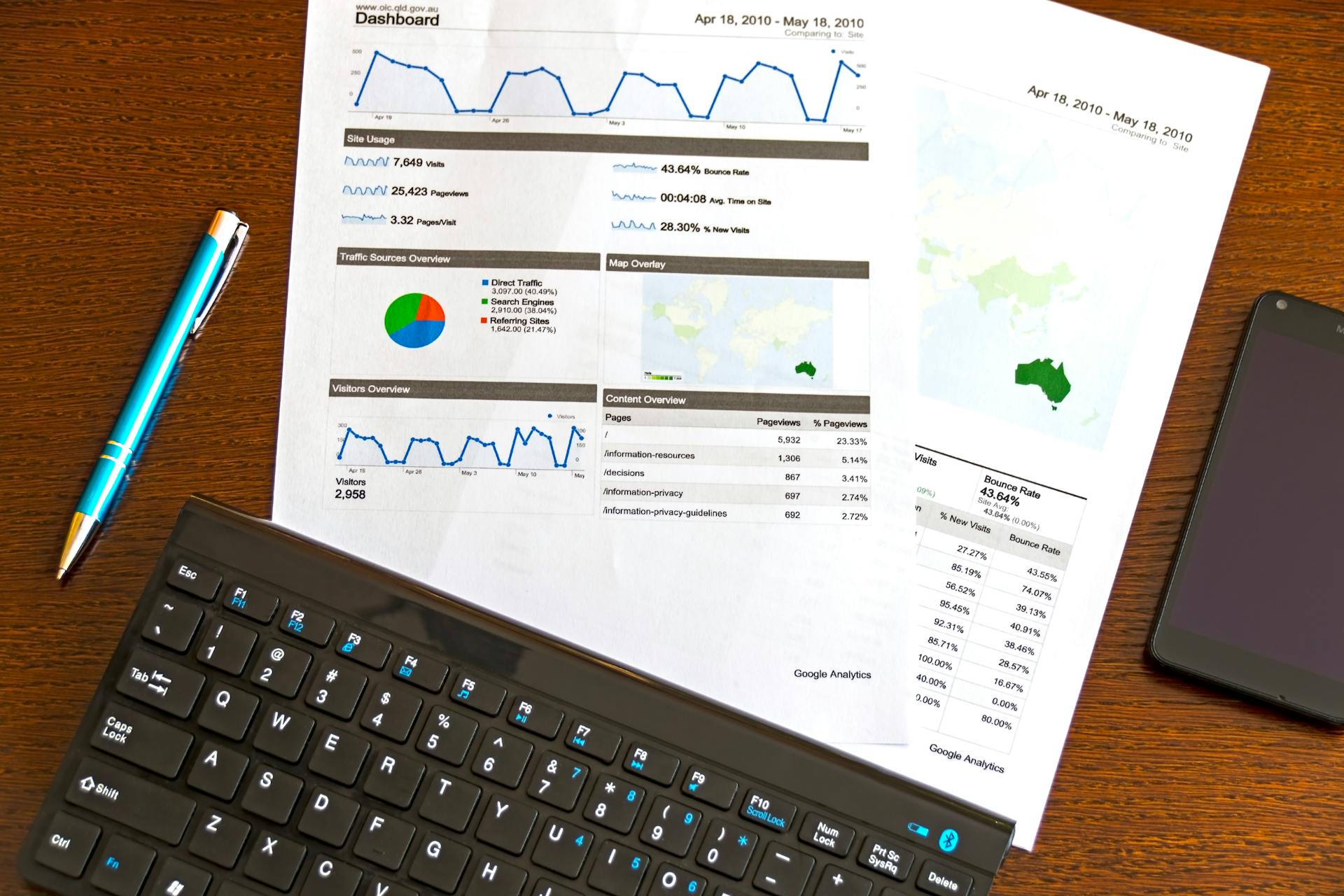The landscape of data analytics is undergoing a revolutionary transformation, driven by the rapid advancement of artificial intelligence (AI) technologies. As businesses grapple with an ever-increasing deluge of data, AI-powered analytics tools are emerging as game-changers, redefining how organizations extract actionable insights and make data-driven decisions.
Gone are the days when data analysis was confined to spreadsheets and basic statistical tools. Today, AI is pushing the boundaries of what’s possible, enabling businesses to predict market trends with unprecedented accuracy, automate mundane data tasks, and uncover hidden patterns that could unlock new revenue streams—all in real-time.
This evolution has been marked by significant milestones:
- Early methods relied on manual calculations and basic statistical tools
- The digital era introduced software like spreadsheets and databases
- Business Intelligence (BI) tools emerged for more sophisticated analysis
- AI integration began to handle increasing data volume and complexity
Now, in 2024, AI tools for data analysis offer advanced capabilities such as real-time processing, natural language processing, and predictive analytics. These tools empower businesses to derive actionable insights from large and complex datasets quickly and efficiently, fundamentally enhancing how organizations process and leverage data.
As we delve deeper into this transformative landscape, we’ll explore the benefits of leveraging AI for data analysis, examine key features of modern AI tools, and provide insights into choosing the right solution for your organization’s unique needs.
Benefits of Leveraging AI for Data Analysis
Implementing AI tools in data analysis brings significant advantages that can fundamentally enhance how your organization processes and leverages data:
Efficiency and Real-Time Processing
AI rapidly processes vast amounts of data, delivering real-time insights that enable quicker decision-making and agile responses to changing conditions. This speed is crucial in today’s fast-paced business environment, where timely information can make the difference between seizing an opportunity and missing it entirely.
Enhanced Accuracy and Reduced Human Errors
By minimizing human errors, AI ensures more reliable and consistent results. This increased accuracy boosts confidence in your team’s data-driven decisions, leading to better outcomes and reduced risks associated with faulty analysis.
Ability to Handle Complex and Large Datasets
AI excels at analyzing large, complex datasets, uncovering intricate patterns and correlations that might go unnoticed by human analysts. This capability allows organizations to extract value from data that was previously too overwhelming or time-consuming to process effectively.
Automation of Repetitive Tasks
AI automates repetitive and time-consuming tasks, freeing up analysts to focus on higher-level strategic activities that drive business growth. This not only increases productivity but also allows your human resources to concentrate on tasks that require creativity, intuition, and strategic thinking.
Advanced Pattern Recognition and Predictive Capabilities
With AI, your organization can detect subtle patterns and emerging trends that manual analysis might miss, giving you a competitive edge in anticipating market shifts. Predictive analytics powered by AI can forecast future trends with remarkable accuracy, enabling proactive decision-making and strategy formulation.
Key Features of Modern AI Tools for Data Analysis
Modern AI tools are engineered to be both powerful and intuitive, providing advanced capabilities that drive better decision-making and efficiency:
Advanced Analytics and Reporting
These tools offer robust analytics and reporting features, enabling organizations to dive deep into their data and extract meaningful insights. They go beyond simple data visualization, providing complex statistical analyses and interactive dashboards that allow users to explore data from multiple angles.
Real-Time Data Processing
AI delivers immediate insights, allowing businesses to make quick, informed decisions in fast-paced environments. This real-time capability is especially crucial in industries where conditions change rapidly, such as finance or e-commerce.
Natural Language Processing (NLP)
With NLP, interacting with data becomes as simple as asking a question, making complex analysis accessible to users of all technical levels. This democratization of data analysis empowers more team members to contribute to data-driven decision-making processes.
Automated Insight Generation
AI tools automatically identify trends, outliers, and anomalies so your team can focus on strategy rather than manual data analysis. This feature helps surface important insights that might otherwise be overlooked, ensuring that critical information doesn’t slip through the cracks.
Predictive Analytics and Forecasting
By forecasting future trends and offering actionable recommendations, these tools help businesses optimize their strategies and stay ahead of the curve. Predictive models can be applied to various aspects of business, from sales forecasting to risk assessment.
Top AI Tools for Data Analysis
Here are some of the leading AI tools for data analysis in 2024, each with unique features and capabilities:
Sigma
Overview: Sigma integrates AI-driven analytics within a cloud-native platform for easy data exploration and visualization.
Key features:
- Natural language querying
- AI-driven insights
- Real-time processing
Pricing: Flexible pricing model, scaling as your business grows.
Use cases: Small to mid-sized enterprises needing comprehensive, user-friendly BI tools that empower collaborative decision-making.
Microsoft Power BI
Overview: Power BI enhances data analysis and reporting with AI, making insights more accessible.
Key features:
- Interactive dashboards
- Natural language queries
- Predictive analytics
Pricing: Free version available; paid plans start at $9.99/user/month.
Use cases: Businesses within the Microsoft ecosystem needing BI with AI capabilities.
Tableau with Tableau CRM (formerly Einstein Analytics)
Overview: Tableau combines powerful data visualization with AI-driven analytics through Tableau CRM.
Key features:
- AI predictions
- NLP
- Salesforce integration
Pricing: Subscription-based with additional costs for AI features; typically higher TCO due to advanced capabilities.
Use cases: Enterprises using Salesforce needing advanced visualization and AI.
Qlik Sense
Overview: Qlik Sense integrates augmented intelligence for enhanced data discovery and analysis.
Key features:
- AI-driven insights
- NLP
- Predictive analytics
Pricing: Subscription-based, moderate to high TCO depending on deployment scale.
Use cases: Organizations needing interactive BI with AI-enhanced analytics.
SAP Analytics Cloud
Overview: Combines BI, planning, and predictive analytics with robust AI capabilities in one platform.
Key features:
- Machine learning
- Smart data discovery
- Forecasting
Pricing: Subscription-based, generally positioned for large enterprises with corresponding TCO.
Use cases: Large enterprises using SAP products needing integrated BI and AI.
Sigma: Empowering Data Analysis with AI
Sigma stands out as a powerful business intelligence (BI) and analytics platform that leverages AI to simplify data exploration, visualization, and analysis, making it more accessible to users across different skill levels.
AI-Powered Insights
Sigma automatically identifies trends, outliers, and correlations that might otherwise go unnoticed, all without requiring deep expertise. This feature helps users quickly surface important insights from complex datasets.
Natural Language Queries
Users can interact with data by asking questions in plain English, with results delivered in intuitive visual formats. This natural language interface makes data analysis accessible to non-technical users, democratizing insights across the organization.
Predictive Analytics
Machine learning models anticipate future trends and behaviors, helping businesses make proactive decisions. This capability allows organizations to stay ahead of market changes and optimize their strategies based on data-driven forecasts.
Real-Time Data Processing
Sigma processes data in real-time, enabling timely decisions based on up-to-date information. This feature is crucial for businesses operating in fast-paced environments where conditions can change rapidly.
Seamless Integration
The platform integrates smoothly with modern data stacks, including tools like Snowflake, Databricks, Fivetran, and dbt, ensuring a cohesive data ecosystem. This integration capability allows organizations to leverage their existing data infrastructure while enhancing it with Sigma’s AI-powered analytics.
By breaking down technical barriers and making sophisticated analysis accessible across the organization, Sigma empowers businesses to make smarter, faster decisions and maintain a competitive edge.
Choosing the Right AI Tool for Your Data Analysis Needs
Selecting the right AI tool for data analysis is a critical decision that can significantly impact your organization’s ability to derive actionable insights and drive data-driven decision-making. Here’s how to approach the selection process:
1. Assess Your Organization’s Data Analysis Requirements
Before diving into specific tools, it’s important to understand your organization’s unique data needs:
- Data complexity: Can the tool handle your current and future data scale without sacrificing performance?
- Desired outcomes: Ensure the tool offers features that match your goals, such as advanced analytics or automation.
Are you dealing with vast, complex datasets, or is your focus more on real-time data processing and predictive analytics? This clarity will help you align the tool’s capabilities with your business objectives.
2. Evaluate Integration with Existing Systems
A critical factor in your decision is how well the AI tool integrates with your existing technology stack. Seamless integration allows you to leverage your current infrastructure without major disruptions.
- Compatibility: Does the tool support your data sources, whether cloud-based or on-premises?
- API and integration options: Robust APIs are crucial for smooth integration with your current systems.
3. Consider User-Friendliness and Learning Curve
An AI tool’s ease of use is vital, especially for teams with varying levels of technical expertise. Tools with intuitive interfaces and built-in support resources can accelerate adoption and reduce the time required for training.
- User interface: Opt for a tool that aligns with your team’s skill levels.
- Support and training: Evaluate the availability of resources like tutorials and documentation.
- Customization: Consider whether the tool allows customizable workflows and dashboards to meet your needs.
4. Compare Pricing Models and Total Cost of Ownership (TCO)
Understanding the pricing model—whether subscription-based, usage-based or a one-time license—is essential. Don’t forget to consider the total cost of ownership (TCO), including any hidden costs for advanced features or scaling.
- Cost structure: Know the pricing tiers and potential additional costs.
- ROI potential: Consider long-term benefits like productivity gains.
- Free trials: Leverage free trials or demos to assess the tool’s fit before committing.
5. Ensure Scalability and Future-Proofing
As your organization grows, your data analysis needs will evolve. Choose a tool that can scale with your business and adapt to technological advancements.
- Growth potential: Can the tool scale with your data needs?
- Future-proofing: Look for tools that incorporate cutting-edge AI technologies.
Real-World Applications of AI in Data Analysis
AI tools for data analysis are transforming industries by providing deeper insights, improving decision-making, and driving innovation. Here are some of the most impactful real-world applications across various sectors:
Healthcare and Life Sciences
AI is revolutionizing healthcare by improving patient care and operational efficiency. Predictive analytics enable more accurate forecasts of patient outcomes, allowing for personalized treatment plans. In drug discovery, AI accelerates the identification of potential drug candidates, significantly reducing the time and cost associated with clinical trials. Additionally, AI-driven analytics streamline claims processing and enhance fraud detection, optimizing healthcare operations.
Key outcomes:
- Patient care: Enhanced predictions and personalized treatment plans.
- Operational efficiency: Accelerated drug discovery and reduced costs.
- Risk management: Improved fraud detection and more efficient claims processing.
Retail and E-commerce
AI in retail enhances customer experience and operational efficiency. Retailers use AI-driven demand forecasting to manage inventory more effectively, minimizing overstock and stockouts. Personalized AI-powered marketing strategies increase customer engagement, while predictive analytics refine pricing strategies and product recommendations.
Key outcomes:
- Inventory management: Real-time demand forecasting minimizes waste.
- Customer engagement: Targeted, personalized marketing increases sales.
- Revenue growth: Optimized pricing and recommendations drive higher revenues.
Supply Chain and Logistics
AI significantly improves supply chain and logistics efficiency through real-time route optimization, predictive maintenance, and advanced demand forecasting. AI algorithms optimize delivery routes, reducing fuel costs and delivery times, while predictive maintenance helps prevent equipment failures, minimizing downtime and costs.
Key outcomes:
- Operational efficiency: Reduced delivery times and lower fuel consumption.
- Cost savings: Proactive maintenance decreases downtime and repair costs.
- Forecast accuracy: Enhanced demand and supply forecasting improves inventory management.
Challenges and Considerations in Implementing AI Data Analysis Tools
While AI tools for data analysis offer transformative benefits, their implementation comes with several challenges that data leaders must navigate to ensure success. Understanding these challenges and planning accordingly can help mitigate risks and maximize the value of AI investments.
1. Addressing Data Privacy and Security Concerns
As AI becomes more integrated into business processes, ensuring data privacy and security remains a top priority. AI systems often require access to vast amounts of data, including sensitive and confidential information.
- Compliance: Ensure AI tools comply with relevant data protection regulations such as GDPR, CCPA, or HIPAA.
- Data encryption: Implement strong encryption protocols for data at rest and in transit to safeguard against breaches.
- Access control: Use role-based access controls to limit who can access sensitive data and regularly audit access logs for unusual activity.
2. Integrating with Legacy Systems
Many organizations rely on legacy systems that are not designed to work with modern AI tools. Integrating AI into these older systems can be complex, requiring significant time and resources to ensure compatibility and seamless operation.
- API compatibility: Verify that the AI tool can interface with legacy systems through APIs or other integration methods.
- Data migration: Develop a plan for data transformation to ensure that legacy data is compatible with the AI tool.
- Cost and complexity: Be prepared for integration’s potential costs and complexity, and consider phased approaches to minimize disruption.
3. Bridging the Skill Gap and Addressing Training Requirements
Successfully implementing AI tools often requires specialized skills that may not be readily available within your organization. Data scientists, machine learning engineers, and AI specialists are typically needed to develop, deploy, and maintain AI models.
- Upskilling employees: Invest in training programs to help existing staff adapt to AI tools and processes.
- Hiring specialists: If necessary, hire new employees with AI expertise, though this can be challenging due to high demand and associated costs.
- User-friendly tools: Consider selecting AI tools that are designed to be user-friendly and require minimal technical expertise to operate effectively.
4. Managing Ethical Considerations in AI-Driven Analysis
As AI becomes more prevalent in data analysis, ethical concerns around its use are increasingly important. Issues such as bias in AI models, potential job displacement, and the impact of AI decisions on individuals and society must be carefully considered.
- Bias detection: Implement measures to detect and mitigate bias in AI models, such as using diverse datasets and conducting regular audits.
- Transparency: Choose AI tools that provide transparent and explainable decision-making processes, especially in sensitive areas like finance or healthcare.
- Social impact: Consider the broader social implications of AI deployment, including job displacement, and develop strategies to reskill or redeploy affected employees.
5. Ensuring Data Quality and Avoiding Bias
The quality of data used to train AI models is critical to their accuracy and effectiveness. Poor data quality can lead to incorrect predictions and decisions, while biased data can perpetuate existing inequalities.
- Data cleaning: Prioritize data cleaning and preprocessing to ensure that AI models are trained on accurate and reliable data.
- Regular audits: Conduct regular audits of data quality and AI outputs to identify and rectify any issues.
- Bias mitigation: Use diverse datasets and fairness-aware algorithms to minimize bias in AI-driven analysis.
The Path to Intelligent Data-Driven Decisions
Selecting the right AI tool is not just a technical decision—it’s a strategic one that directly impacts your organization’s ability to achieve its business goals. The right AI tool aligns with your business objectives, seamlessly integrates with your existing systems, and delivers measurable ROI. It enables you to turn vast amounts of data into actionable insights, giving your organization a competitive edge.
When you carefully evaluate your needs and draw on real-world applications, you position your organization to harness AI’s full potential. The right tool doesn’t just process data; it transforms it into valuable insights that drive informed decisions, optimize operations, and fuel innovation. In an increasingly data-driven world, this alignment between AI capabilities and business strategy is essential for long-term success.
By making a thoughtful choice in AI tools, you ensure that your organization can adapt, innovate, and lead in a rapidly changing landscape. The right AI tool is more than a solution—it’s a catalyst for growth and a key driver of business success.
Frequently Asked Questions (FAQ)
What is the best AI to analyze Excel data?
The best AI tool for analyzing Excel data would integrate seamlessly with Excel and offer advanced analytics capabilities. Tools that enhance Excel’s functionality with features like AI-driven insights, predictive analytics, and natural language queries are particularly useful. These tools allow users to analyze deeper without switching to a different platform.
What is the AI tool to analyze CSV data?
AI tools specializing in data preprocessing, feature engineering, and handling large datasets are ideal for analyzing CSV data. These tools often integrate with data science environments, providing automated processes that streamline data cleaning, transformation, and analysis, making them well-suited for handling complex CSV files efficiently.
Is AI useful in data analytics?
Yes, AI is incredibly valuable in data analytics. It automates repetitive tasks, enhances pattern recognition, and provides predictive and prescriptive insights, which are difficult to achieve with traditional data analysis methods. AI-driven tools can handle large datasets, uncover hidden trends, and make data analysis more accessible to non-technical users.
How to use AI in Excel?
To use AI in Excel, you can leverage built-in AI features like Insights, which automatically detect patterns and trends in your data. For more advanced AI capabilities, integrating Excel with AI-driven analytics platforms or tools can enhance your data analysis. These integrations allow for natural language queries, predictive analytics, and more sophisticated data processing directly from your Excel spreadsheets.



